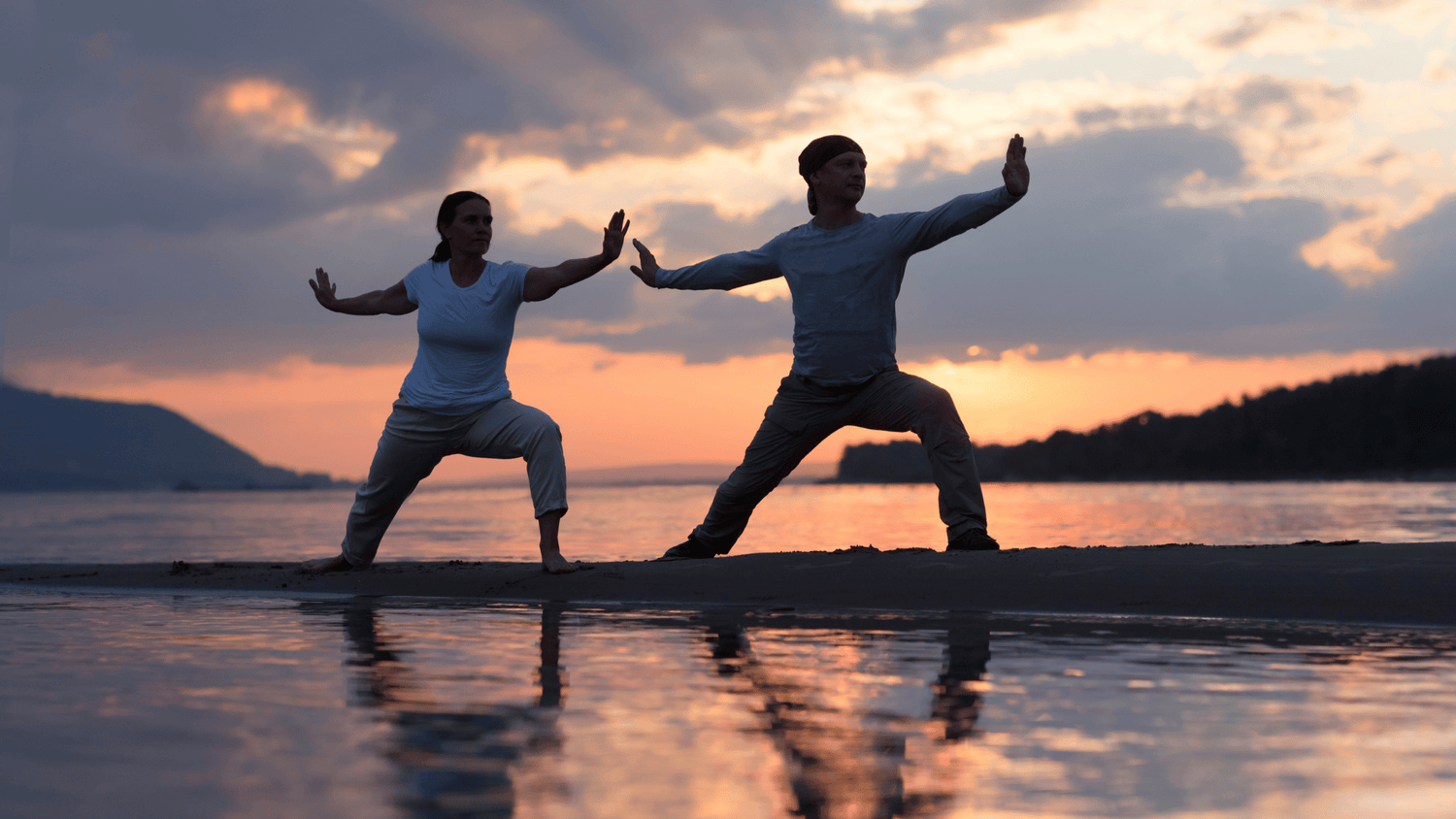Injury prevention is a crucial aspect of maintaining a healthy and active lifestyle. While traditional exercise routines are essential, natural lifestyle-based exercises can significantly reduce the risk of injuries in our daily lives. These exercises enhance our body's natural movements, functional strength and mobility, making them practical tools for injury prevention. In this article, we'll explore six of the best natural lifestyle-based exercises you can incorporate into your daily routine to stay injury-free and promote overall well-being.
1. Walking: The Foundation of Natural Movement and Mobility
Walking is one of the most natural and fundamental exercises for humans. It's an excellent form of cardiovascular exercise and a perfect way to strengthen your lower body, improve balance and mobility and maintain joint health (R).
How to Incorporate Walking:
- Aim to walk for at least 30 minutes daily, whether a brisk walk in your neighbourhood or a leisurely stroll in the park.
- Take the stairs instead of the elevator whenever possible.
- If you work at a desk, set a timer to stand up, walk around, and stretch every hour.
Benefits:
- Strengthens leg muscles, including the calves, quadriceps, and hamstrings.
- Promotes joint flexibility and mobility, reducing the risk of stiffness and injury.
- Enhances overall cardiovascular health.
2. Squatting: A Natural Resting Position
Squatting is a natural resting position for humans that involves bending your knees and hips while keeping your feet flat on the ground. Incorporating squats into your daily routine can help improve lower body strength, mobility, and flexibility (R).
How to Incorporate Squatting:
- Practice squatting while brushing your teeth or waiting for your coffee to brew. Simply lower yourself into a squatting position and hold it for as long as you can comfortably.
- Use proper squatting form: keep your back straight, chest up, and knees aligned with your feet.
Benefits:
- Strengthens the muscles of the lower body, including the thighs, glutes, and calves.
- Improves hip and ankle flexibility, reducing the risk of injuries related to stiffness.
- Enhances functional strength for daily activities like getting up from a chair or lifting objects.
3. Balance Exercises: Enhancing Stability
Balance exercises are essential for injury prevention as they improve stability and proprioception, your body's ability to sense its position in space. These exercises can help prevent falls and injuries, especially as we age (R).
How to Incorporate Balance Exercises:
- Stand on one leg while brushing your teeth or washing dishes. Gradually increase the duration of each leg.
- To add instability, perform balance challenges like standing on a foam pad or cushion.
Benefits:
- Enhances balance and stability, reducing the risk of falls and related injuries.
- Strengthens the stabilising muscles of the ankles, knees, and hips.
- Improves proprioception, aiding in injury prevention during sports and other physical activities.
4. Climbing Stairs: Natural Leg Workout
Climbing stairs is a daily activity that can be turned into a natural lifestyle-based exercise. It provides an excellent workout for your lower body and cardiovascular system, all while improving joint flexibility and leg strength (R).
How to Incorporate Stair Climbing:
- If you encounter stairs, climb them instead of taking the elevator or escalator.
- To make it more challenging, take the stairs two at a time or skip a step for an extra leg workout.
Benefits:
- Strengthens leg muscles, particularly the quadriceps and glutes.
- Enhances cardiovascular fitness and lung capacity.
- Improves joint flexibility and stability in the knees and hips.
5. Gardening: Functional and Therapeutic
Gardening is a fantastic lifestyle-based exercise that combines physical activity with the therapeutic benefits of connecting with nature. It involves various movements, including squatting, digging, lifting, and reaching, making it an excellent full-body workout (R).
How to Incorporate Gardening:
- Dedicate time each day or week to tend to your garden, whether it's weeding, planting, or harvesting.
- Focus on proper body mechanics to prevent strain or injury. Use ergonomic tools and lift with your legs, not your back.
Benefits:
- Engages a wide range of muscles, promoting functional strength and flexibility.
- Enhances balance, coordination, and motor skills.
- Provides mental relaxation and stress reduction, contributing to overall well-being.
6. Yard Work or Cleaning: A Natural Functional Workout
Yard work or cleaning, including activities like raking leaves, mowing the lawn or vacuuming the house, offers a natural and functional workout. It mimics everyday movements and can help improve overall strength and endurance (R).
How to Incorporate Yard Work:
- Take on house and yard work tasks regularly and focus on using proper body mechanics.
- Maintain good posture while vacuuming, raking, shovelling, or mowing to prevent back strain.
Benefits:
- Provides a full-body workout, engaging muscles in the upper body, core, and lower body.
- Enhances functional strength for tasks like lifting and carrying objects.
- Offers an opportunity to connect with nature and enjoy the outdoors while exercising.
7. Sports: Working their Mobility Magic
From the fluidity of yoga to the core-centric Pilates or the serenity of Tai Chi, these activities can work magic on your mobility. Embrace their myriad of benefits, including enhanced flexibility, improved joint health, and a reduced risk of mobility-related injuries (R).
How to Incorporate Mobility Sports:
- Try water aerobics, cycling, tennis, pilates or yoga or Tai Chi
- The key here is to choose a sport or activity you enjoy, know your limitations and consult a fitness professional if unsure.
Benefits:
- Mobility sports like yoga, Pilates, and stretching routines can significantly enhance flexibility by increasing the range of motion in joints and muscles.
- These sports promote better joint health by reducing stiffness, preventing muscle imbalances, and decreasing the risk of injuries related to limited mobility.
Remember, injury prevention isn't just about avoiding accidents; it's about nurturing your body and ensuring it's prepared for the challenges of daily life. From the simplicity of walking to the functional benefits of yard work, these exercises offer a holistic approach to staying injury-free.
So, take the stairs instead of the elevator, embrace the natural resting position of squats, and connect with the therapeutic joy of gardening. These lifestyle-based exercises will help safeguard you from injuries and enhance your physical and mental well-being.
Incorporating these exercises doesn't require a significant time commitment or specialised equipment; they can seamlessly become a part of your daily routine. Start small, gradually increase your efforts, and reap the rewards of a healthier, more resilient body.





